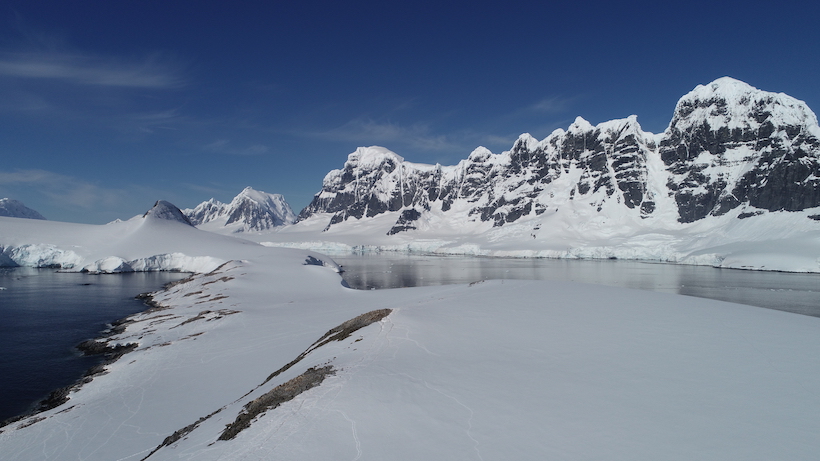
A study carried out by researchers from the Center for the Dynamic Research of marine ecosystems of high latitude ES (IDEAL) unveiled how the melting of glaciers helped in the formation of large populations of microalgae in Antarctic coastal zones.
To date, due to its oceanographic conditions, Antarctica had recorded relatively low densities of phytoplankton, fundamental organisms in the photosynthesis of the oceans and are also a basal part of the trophic plots that feed Major species, such as penguins and whales.
Credit: Paulina Möller)
During the spring of 2016, a historical minimum of sea ice was recorded, which caused a significant increase in the water temperature during the summer of 2017, this added to the constant melting of glaciers in the Antarctic Territory, made this type of microorganisms will present greater abundances.
Increased microalgae
The increase of the microalgae was analyzed by Dr. Juan Höfer, researcher of the Center for the Dynamic Research of marine ecosystems of high latitudes (IDEAL) and academic of the School of the Sea of the Pontifical Catholic University of Valparaiso (PUCV), who During the last two Antarctic scientific Expeditions (RCTS) he made iron measurements on the icebergs present in the Fildes and South bays.
“The combination of freshwater inlets of glacial origin and warmer surface water made both bays submit very stable waters that favoured the growth of phytoplankton. In addition, glacier ice contains iron and these freshwater glacial inlets brought this element to the microalgae of coastal areas, which also favored its proliferation, “said the researcher.
Increase in surface water temperatures
Phytoplankton consumes the carbon dioxide (CO2) of water, thus absorbing this element present in the atmosphere, acting as a major greenhouse gas sump. Microalgae also end up in oceanic funds, serving as extra food to animals living in Antarctic bays.
What is expected for the next few years? Höfer said that in future scenarios it is possible to find a record similar to what happened last year: an increase in the surface temperatures of the water, which would be accompanied by a greater thaw of the coastal glaciers present in the white continent. He explained that “if no other process came into play as changes in wind patterns, these changes could make Antarctic coastal waters more productive in the future, which would mean an extra energy entry into the system and increased consumption of CO2 Atmospheric in these areas. ”
"El reclamo puede ser genuino, pero construido sobre una mentira", apuntó el presidente Javier Milei…
El gobernador de la provincia de Buenos Aires, Axel Kicillof, encabezó un acto en Ensenada…
El diputado nacional de La Libertad Avanza, José Luis Espert, expresó su confianza en la…
Tras la masiva reaparición de Cristina Fernández de Kirchner, el presidente Javier Milei apuntó contra…
El principal propósito de la nueva comisión es evaluar los recursos humanos en el Senado,…
En una medida que busca redefinir las condiciones de los seguros de automóviles en Argentina,…
Esta web usa cookies.